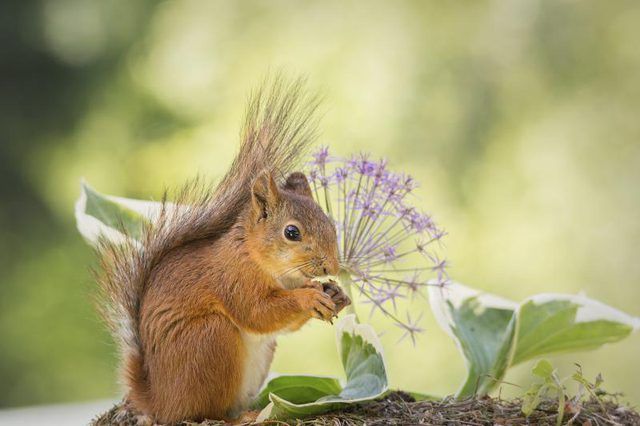Bulbs
Flower Basics
Flower Beds & Specialty Gardens
Flower Garden
Garden Furniture
Garden Gnomes
Garden Seeds
Garden Sheds
Garden Statues
Garden Tools & Supplies
Gardening Basics
Green & Organic
Groundcovers & Vines
Growing Annuals
Growing Basil
Growing Beans
Growing Berries
Growing Blueberries
Growing Cactus
Growing Corn
Growing Cotton
Growing Edibles
Growing Flowers
Growing Garlic
Growing Grapes
Growing Grass
Growing Herbs
Growing Jasmine
Growing Mint
Growing Mushrooms
Orchids
Growing Peanuts
Growing Perennials
Growing Plants
Growing Rosemary
Growing Roses
Growing Strawberries
Growing Sunflowers
Growing Thyme
Growing Tomatoes
Growing Tulips
Growing Vegetables
Herb Basics
Herb Garden
Indoor Growing
Landscaping Basics
Landscaping Patios
Landscaping Plants
Landscaping Shrubs
Landscaping Trees
Landscaping Walks & Pathways
Lawn Basics
Lawn Maintenance
Lawn Mowers
Lawn Ornaments
Lawn Planting
Lawn Tools
Outdoor Growing
Overall Landscape Planning
Pests, Weeds & Problems
Plant Basics
Rock Garden
Rose Garden
Shrubs
Soil
Specialty Gardens
Trees
Vegetable Garden
Yard Maintenance
How to Keep Squirrels From Eating Flowers
How to Keep Squirrels From Eating Flowers. Cute, playful squirrels gain the affection of many homeowners -- until they start displaying problematic behaviors that become costly and cause unsightly damage. Their varied diets include many of the plants and flowers homeowners and landscapers choose to plant, creating a delicate line between cute and...

Cute, playful squirrels gain the affection of many homeowners -- until they start displaying problematic behaviors that become costly and cause unsightly damage. Their varied diets include many of the plants and flowers homeowners and landscapers choose to plant, creating a delicate line between cute and pestilent. Fortunately, a number of techniques can help you keep these furry rodents from turning your garden into an all-you-can-eat buffet.
Damage Caused
Squirrels typically prefer to feed on succulent plant material, including the young, tender shoots and stems of growing potted plants, and recently transplanted plants. They also have a taste for bulbs and seeds. Squirrels will bite off whole stems, pull down stems to get to flowers and fruits, and dig holes to reach seeds and bulbs. This may not always cause great damage to your landscape if you have only a handful of squirrels, although too many squirrels or very hungry squirrels can cause unsightly damage to your overall landscape design.
Leave a Bad Taste
Repel your pesky squirrels with environmentally responsible and safe taste repellents. Taste repellents leave a bad taste in their mouths, giving them reason to move into another yard or to plants you deem OK for them to chomp on. Store-bought repellents often come in spray bottles and ready-to-use formulas, but may contain harmful synthetic chemicals and pesticides.
Capsaicin, the chemical that makes jalapenos (Capsicum annuum "Jalapeno"), habaneros (Capsicum chinense "Habanero") and other peppers (Capsicum spp.) hot, often works and tests positively as a squirrel repellent. Mix 1 tablespoon of hot sauce with 1 quart of water, and spray it on your plants. For a stronger taste and smell repellent, boil one chopped yellow onion (Allium cepa), one chopped jalapeno pepper and 1 tablespoon cayenne pepper in 2 quarts of water for 20 minutes; then strain with cheesecloth. Spray it on plants every three to five days, and reapply after rain.
Unappealing Appetizers
Although the many species of tree and ground squirrels have slightly differing diets and behaviors, some plants are more appealing than others. Including unappealing plants in your gardens can help curb damage and cause squirrels to look elsewhere for food.
Squirrels often avoid the following flowering perennials: yarrow (Achillea millefolium), which grows in U.S. Department of Agriculture plant hardiness zones 3 through 9; dahlia (Dahlia spp.), hardy in USDA zones 8 through 10; bleeding heart (Dicentra spectabilis), hardy in USDA zones 3 through 9; foxglove (Digitalis tomentosa), which grows in USDA zones 4 through 8; coneflowers (Echinacea spp.), hardy in USDA zones 2 through 8, depending on species; blanket flowers (Gaillardia spp.), which grows in USDA zones 3 through 9; daylilies (Hemerocallis spp.), which grow in USDA zones 3 through 10; and bee balm (Monarda didyma), which grows in USDA zones 4 through 9.
Keep Them Out
Exclusion is the most effective method of reducing squirrel damage to your prized perennials, but it may not be the most cost-effective or simple plan. Exclusion works best for flower bulbs and small plants. Squirrels favor many species of buried bulbs, creating a mess for gardeners waiting for their spring or fall bulbs to come up. Cover flower bulbs with hardware mesh, a common metal mesh sold at hardware stores. Create a mesh cage around small flowering plants with either hardware mesh or chicken wire, and then clip bird netting over the top with clothes pins. Use small fence stakes to secure the fence. Remember to leave enough room inside the cage for flowers to grow. This doesn't work for ornamental plants, as the cage can sometimes be unsightly or otherwise distract from the beauty of your landscape. Another option, albeit costly, is placing a metal fence around your garden and topping it with an electric wire.